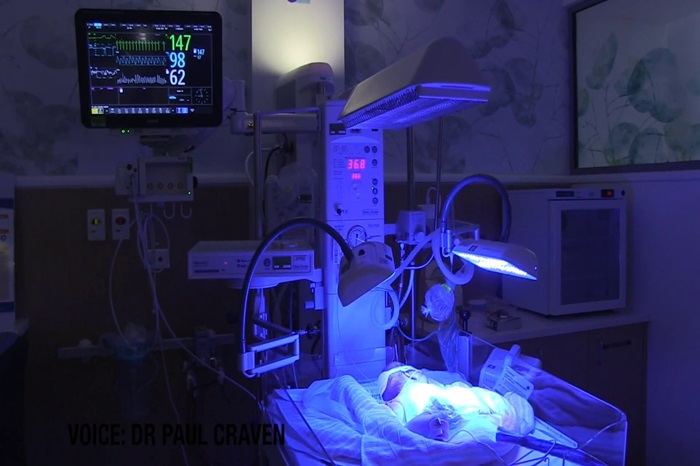Jaundice is a common condition in newborns. It causes yellowing of the skin and eyes. This happens because of high levels of bilirubin in the blood. Bilirubin is a yellow pigment produced during the normal breakdown of red blood cells. Newborns often have a high bilirubin level because their livers are not yet fully developed to remove it efficiently. Phototherapy is the most common treatment for jaundice in newborns. This article will explore the types of light used to treat jaundice, how it works, and its effectiveness.
Understanding Jaundice
Jaundice occurs when there is an excess of bilirubin in the blood. Bilirubin is produced when red blood cells are broken down. Normally, the liver processes bilirubin and it is excreted in the stool. However, in newborns, the liver may not be mature enough to handle the excess bilirubin. This leads to a buildup in the blood, causing the skin and eyes to appear yellow.
Types of Jaundice
Physiological Jaundice: This is the most common type of jaundice. It usually appears two to four days after birth and resolves within one to two weeks. It is caused by the immaturity of the newborn’s liver.
Breastfeeding Jaundice: This type occurs in breastfeeding infants. It is usually due to insufficient intake of breast milk, leading to dehydration and increased bilirubin levels.
Breast Milk Jaundice: This appears later, around the second week of life. It is thought to be caused by substances in the mother’s milk that increase the reabsorption of bilirubin in the intestines.
Pathological Jaundice: This is less common and occurs due to underlying medical conditions. It appears within the first 24 hours of life and may be caused by blood group incompatibility, infections, or liver disorders.
SEE ALSO: What Is Phototherapy Used for in Newborns?
Phototherapy: The Primary Treatment
Phototherapy is the primary treatment for jaundice. It involves exposing the baby to a type of light that helps break down bilirubin in the skin. The light changes the bilirubin into a form that can be excreted in the urine and stool. This treatment is safe and effective.
Types of Light Used in Phototherapy
Blue Light
Blue light is the most commonly used light in phototherapy. It has a wavelength of 460-490 nanometers. This wavelength is optimal for breaking down bilirubin. Blue light penetrates the skin and alters the structure of bilirubin, making it easier for the body to eliminate it.
How Blue Light Works
Penetration: Blue light penetrates the skin and reaches the bilirubin in the blood.
Photoisomerization: The light changes the structure of bilirubin, converting it into lumirubin.
Excretion: Lumirubin is water-soluble and can be excreted in the urine and stool.
Green Light
Green light has also been used in phototherapy. It has a wavelength of 490-540 nanometers. Some studies suggest that green light may be as effective as blue light in treating jaundice. However, blue light remains the standard treatment.
How Green Light Works
Penetration: Green light penetrates the skin and reaches the bilirubin.
Photoisomerization: The light changes the structure of bilirubin, converting it into a water-soluble form.
Excretion: The altered bilirubin is excreted in the urine and stool.
Fluorescent Light
Fluorescent light was one of the first types of light used in phototherapy. It emits a broad spectrum of light, including blue light. However, it is less commonly used today because LED lights are more efficient and have a longer lifespan.
How Fluorescent Light Works
Penetration: The light penetrates the skin and reaches the bilirubin.
Photoisomerization: The light changes the structure of bilirubin, converting it into a water-soluble form.
Excretion: The altered bilirubin is excreted in the urine and stool.
LED Light
LED lights are now the preferred light source for phototherapy. They emit a narrow spectrum of blue light, which is ideal for treating jaundice. LED lights are energy-efficient, have a long lifespan, and produce less heat compared to fluorescent lights.
How LED Light Works
Penetration: LED light penetrates the skin and reaches the bilirubin.
Photoisomerization: The light changes the structure of bilirubin, converting it into lumirubin.
Excretion: Lumirubin is excreted in the urine and stool.
Fiberoptic Phototherapy
Fiberoptic phototherapy involves the use of a fiberoptic pad or blanket. The pad contains fiberoptic cables that deliver light directly to the baby’s skin. This method is useful for treating jaundice in premature infants and those who cannot tolerate traditional phototherapy.
How Fiberoptic Phototherapy Works
Placement: The fiberoptic pad is placed on the baby’s back.
Penetration: The light penetrates the skin and reaches the bilirubin.
Photoisomerization: The light changes the structure of bilirubin, converting it into a water-soluble form.
Excretion: The altered bilirubin is excreted in the urine and stool.
Effectiveness of Phototherapy
Phototherapy is highly effective in treating jaundice. The treatment duration depends on the bilirubin levels and the baby’s response to the therapy. Most babies show improvement within 24-48 hours. Regular monitoring of bilirubin levels is essential to assess the effectiveness of the treatment.
Safety of Phototherapy
Phototherapy is generally safe and well-tolerated. However, some potential side effects include:
Dehydration: Babies may lose more fluid through their skin. Ensuring adequate fluid intake is essential.
Skin Rash: Some babies may develop a mild skin rash. This usually resolves on its own.
Temperature Instability: Babies may become too warm or too cool. Monitoring the baby’s temperature is important.
Eye Protection: The baby’s eyes need to be protected from the light. Eye patches or shields are used during the treatment.
Conclusion
Phototherapy is the primary treatment for jaundice in newborns. Blue light, with a wavelength of 460-490 nanometers, is the most commonly used light. It is highly effective in breaking down bilirubin and helping the body eliminate it. Green light, fluorescent light, LED light, and fiberoptic phototherapy are also used in certain cases. Phototherapy is safe and effective, with minimal side effects. Regular monitoring and proper care during the treatment ensure the best outcomes for newborns with jaundice.


